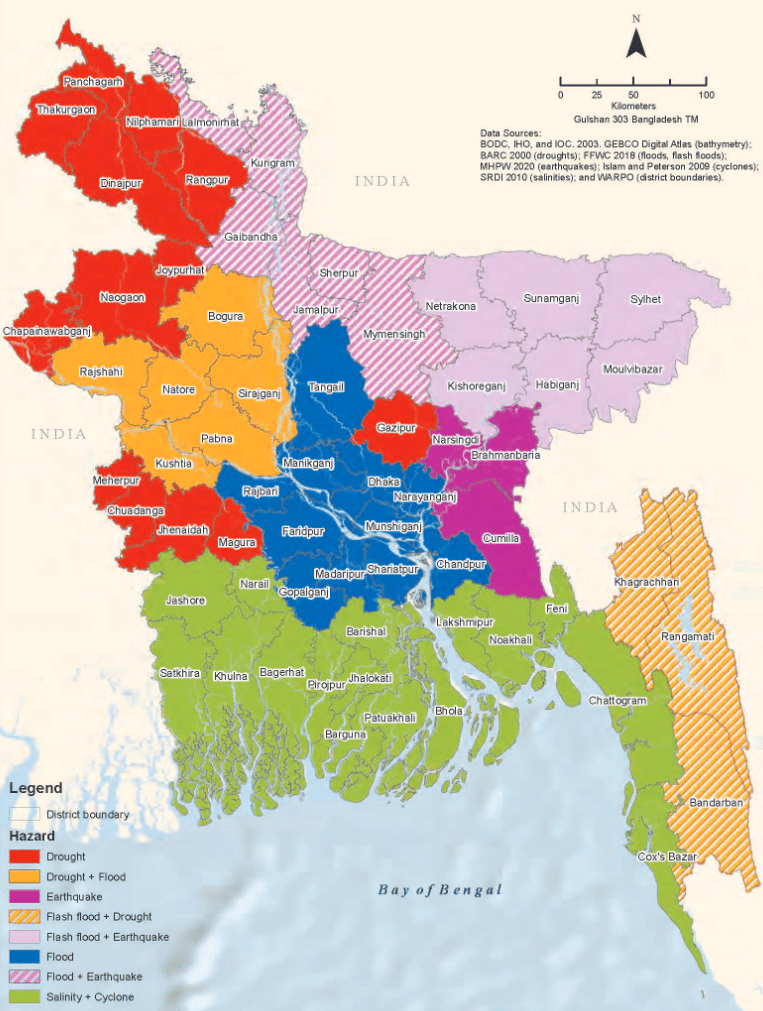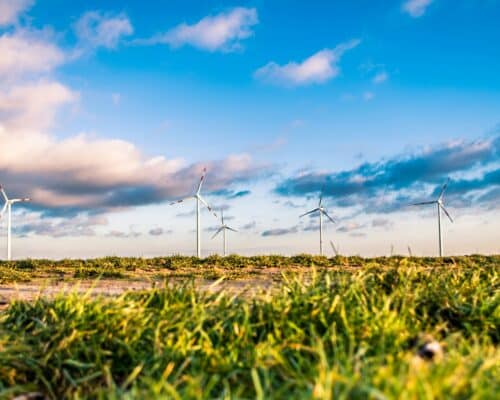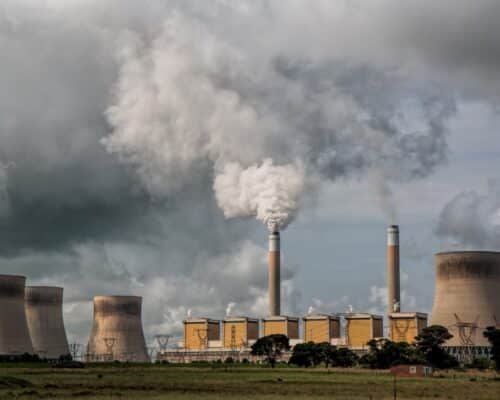Bangladesh’s Energy Needs and a Fair and Just Energy Transition
Hafiz Johari / Shutterstock.com
03 July 2023 – by Viktor Tachev Comments (0)
Bangladesh aims to transform its energy system to insulate its economy from price shocks and accelerate decarbonisation. While this is a much-needed change, this transition must be human-centred. Alternatively, Bangladesh should pursue a fair and just energy system transformation that acknowledges community needs. Among the list of priorities is protecting the population from climate change-induced losses, which affect health, jobs, and livelihoods. The country must also improve its adaptability to a changing economy and the climate crisis.
Why Bangladesh Needs a Fair and Just Energy Transition
Bangladesh is ranked seventh among the most climate-vulnerable countries globally. Meanwhile, the entire territory is prone to some form of climate hazard.
Heat stress, floods, erosion, air pollution and other hazards threaten the health and livelihoods of around 90 million Bangladeshis. Around 56% of Bangladeshis are exposed to climate change impacts than the global average of 14%.
By 2050, up to 19.9 million Bangladeshis will become climate refugees – higher than the numbers of any other Asian country. Scientists fear the country might experience the largest mass migration in human history.

While a fair and just energy transition in most countries means protecting livelihoods and harnessing the well-being of the social groups most affected by the switch to renewable energy, in the context of Bangladesh, it relates more to climate change impacts and their effect on workers and vulnerable groups, including women, children and the disabled.
Due to the country’s unique circumstances, the government’s number one priority should be protecting communities from climate change-induced losses, causing loss of work, homes, proper living conditions – access to education, health facilities and more – and food and water security issues.
Achieving a Fair and Just Energy Transition in Bangladesh
The government has recently taken measures to ensure a swift energy transition for its population. For example, one of the main goals under the Mujib Climate Prosperity Plan (MCPP) Decade 2030 is to create 4.1 million new climate-resilient jobs. The government also aims to reduce unemployment to 3.9% by 2030.
In 2019, Bangladesh founded the National Skills Development Authority (NSDA) to coordinate workers’ associations to implement upcoming industry transformation plans. Under the MCPP, Bangladesh aims to also invest in labour market assessment activities and improve the quality of educators. For example, the share of those studying a master’s programme in renewable energy at the University of Dhaka’s Institute of Energy rose from 17% to 27% between 2019 and 2021.
Overall, the government aims to train and reskill around 3.83 million people by 2030. Alongside the NSDA, several other bodies, including the National Skills Development Council (NSDC) and the National Human Resource Development Fund (NHRDF), will administer the process.
While these efforts are a good start, experts find them insufficient. Bangladesh needs to do a lot more and do it quickly to ensure inclusive economic decarbonisation.
Some of the key focus areas that need to be prioritised include the following.
Ensuring the Necessary Financing
According to the MCPP, a just transition of labour and the futureproofing of industries will cost about USD 11.63 billion. Of this, USD 1.51 billion is needed for training and reskilling. Around USD 10.12 billion will go towards establishing Bangladesh’s role in the future’s global supply chain. The package aims to help the least skilled, most vulnerable and underprivileged parts of society not get left behind.
While Bangladesh has drafted the strategic roadmap for the transition, the question remains as to where it will find funding.
The government spends between 6-7% of its annual budget on climate change adaptation. More than 75% of it comes from domestic sources. At the same time, Bangladesh has one of the lowest tax-to-GDP ratios (8%) in Asia. As a result, the government has limited capacity to fund the significant expansion of social programs or other activities to protect the most affected by the energy transition.
Yet, some internal policy adjustments can, on paper, allow the country to unlock alternative sources of funds. For example, the power sector’s fossil fuel subsidies for the FY2021-22 have caused a USD 2.82 billion burden. A more ambitious clean energy policy will free up some of these funds. It can allow the government to reroute the capital towards green job creation, reskilling, training and climate change adaptability for at-risk communities.
Developing local capital markets to provide climate-aligned investment and financing mechanisms like green bonds, for example, is another potential source of capital. Such a move would enable sustainable development financing to move away from bank loans.
Furthermore, the country can take note of its Southeast Asian peers. International funding programs and partnerships, similar to the Just Energy Transition Partnerships of Vietnam and Indonesia, are promising vehicles for ensuring international support for energy transition activities.
Engaging All Stakeholders
A fair and just energy transition requires acknowledging the concerns and addressing the needs of all stakeholders – from the government and businesses to international partners, energy sector, civil society groups and communities. The country’s leadership should unite all parties around the common goal.
Researchers say many local Bangladeshi businesses aren’t well aligned with green economy thinking. The government should stimulate companies to evolve sustainably and align with the future of a changing climate.
Fortunately, the other stakeholders are on board with the mission.
Bangladesh has strong civil society organisations engaged in various activities, from encouraging green operations in private companies to promoting next-generation sustainability practices and advancing climate adaptation efforts. For example, the solid record of women’s empowerment has already rapidly reduced poverty. Various organisations have launched programs that teach women without any engineering background to build and fix solar power systems. Furthermore, more and more women are pursuing education in renewable energy technologies. For example, the share of those studying a master’s program in renewable energy at the University of Dhaka’s Institute of Energy rose from 17% to 27% between 2019 and 2021.
The garment sector, responsible for 10% of Bangladesh’s GDP and 80% of its exports, is a shining example for other businesses. The industry employs over 3 million women and girls and is actively adopting sustainable practices. Bangladesh has the highest number (half the global total) of Leadership in Energy and Environmental Design (LEED)-certified clean and green garment factories worldwide.
However, these efforts result mainly from the work of the private sector. At the same time, the government is criticised for not doing enough.
Proportion of population exposed to climate risks, Source: Zero Carbon Analytics citing USAID
Protecting Communities From Climate Change-induced Loss of Work
Rising sea levels, coastal area floodings and heat stress – climate change’s impacts threaten the livelihoods of millions of Bangladeshis. These include fishermen, farmers and even those employed in the garments and textile industry, the backbone of Bangladesh’s economy. A Cornell University study reveals that without climate action, 35% of Bangladesh’s apparel-producing areas could be flooded regularly by 2030.
Furthermore, heat stress reduces labour efficiency, wiping out up to 10 billion working hours annually. Dhaka alone loses USD 6 billion worth of productivity each year.
Bangladesh’s economy and the livelihoods of millions face various risks. Among them are job losses due to climate change, manufacturing automation, Western brands’ efforts to bring supply chains closer to their operations and more. As a result, the backbone of the energy transition should be reskilling and training.
The International Center for Climate Change and Development warns the government that it isn’t doing enough to prepare for the looming changes. Instead, the positive influences come mainly from the private sector, including training programs by brands and international agencies. For example, H&M backs an initiative to educate and prepare female workers for a future shaped by automation.
Regional Cooperation
Bangladesh, Pakistan, India and many Southeast Asian countries, to some extent, are all facing similar issues, although with different severity.
However, every country has approached them differently. As a result, the nations have much to learn from each other. Multidimensional regional cooperation can prove invaluable for tackling the most pressing issues, including climate change adaptation and mitigation, livelihood and community preservation, green growth and more.
For example, India has successfully implemented a HEWS (Heat Early Warning System) programme. A similar practice can support heat-related mortality prevention in Bangladesh. Vietnam’s success in accelerated clean energy adoption can help Bangladesh escape its fossil fuel trap and improve on its 2% renewables share in the total power mix.
It is crucial for countries also to collaborate on designing a regional electricity market and harness the vast potential for hydropower.
Regional cooperation can also translate into exchanging know-how and equipping a generation of young workers with green thinking and skills for a changing world. This can go hand-in-hand with the design of climate-resilient migrant-friendly towns – something crucial for Bangladesh. Such a strategy can help ease the migrant pressure on Dhaka, the world’s most densely-populated city. Bangladesh has already started working in that direction, as seen by the transformative adaptation measures in Mongla.
Protecting People: The Main Priority of Bangladesh’s Energy Transition
Bangladesh is ground zero for climate vulnerability. At the same time, it faces the perplexing puzzle of ensuring economic growth while withstanding the climate crisis’ impacts and protecting the most vulnerable in the transition towards a more sustainable, resilient and independent energy system. It is safe to say that few other countries globally face such a conundrum.
While moving away from fossil fuels is a crucial aspect of the energy transition, the main focus of Bangladesh’s just transition should be on social equity, building climate change resilience and reskilling or training those most affected by the climate crisis. Navigating the complicated situation requires strengthening the adaptive capacity of climate-impacted communities, rehabilitating displaced people and ensuring support for their livelihoods.
The switch to a renewable energy-dominated power system in Bangladesh won’t be the main threat to industries and individuals. Climate change will be. And Bangladesh has to acknowledge this.
by Viktor Tachev
Viktor has years of experience in financial markets and energy finance, working as a marketing consultant and content creator for leading institutions, NGOs, and tech startups. He is a regular contributor to knowledge hubs and magazines, tackling the latest trends in sustainability and green energy.
Read more




